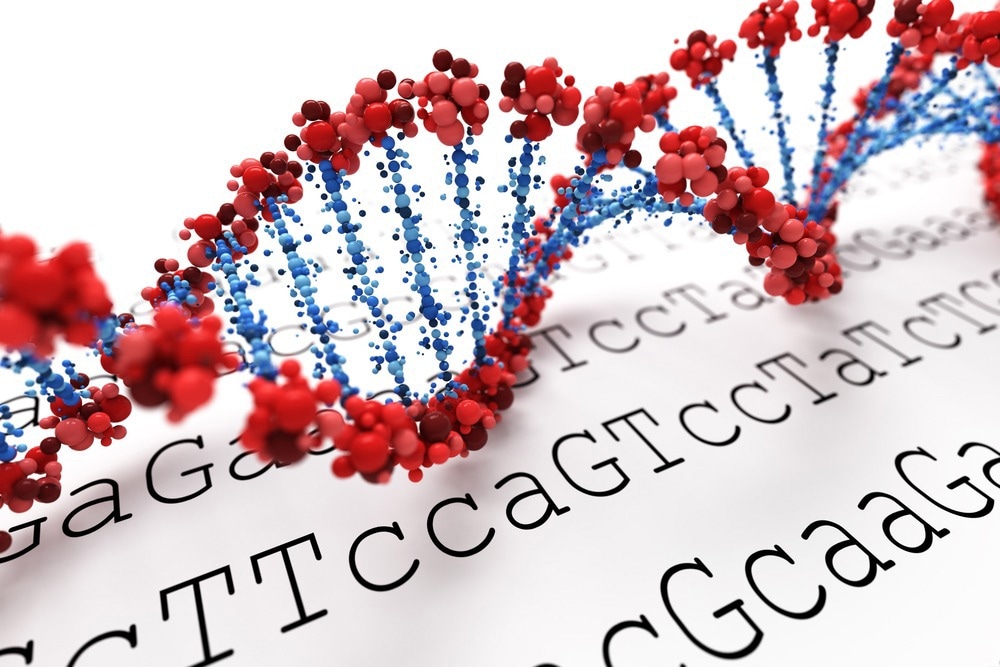Rhodamine 6G (R6G) is one of the most frequently used dyes for application in dye lasers and as a fluorescence tracer. R6G also serves as a model dye to probe the nature of the surface-enhanced Raman scattering (SERS) effect.

Study: Nanogold-capped poly(DEGDMA) microparticles as surface-enhanced Raman scattering substrates for DNA detection. Image Credit: Leigh Prather/Shutterstock.com
In an article published in the Journal of Physics D: Applied Physics, gold nanoparticles (AuNPs)-decorated poly(diethylene glycol dimethacrylate) (DEGDMA) microparticles-based novel platform was used as surface-enhanced Raman scattering (SERS) substrate. The microparticles decorated with AuNPs showed a significant SERS enhancement in the R6G Raman signal compared to the bare counterparts.
For the excitations at 532, 633, and 785 nanometers, the one in near-infrared showed the highest enhancement on the substrate and outstanding spatial uniformity and temporal stability. The practical application of the fabricated SERS substrate was demonstrated with DNA detection in Giardia lamblia parasite
SERS Substrates for Raman Spectroscopy
Raman spectroscopy utilizes the interaction of light with matter and helps detect the characteristic vibrations and the molecular make-up of the matter. SERS enhances the Raman intensity based on the interaction of the excitation light with the nanostructure’s plasmons.
SERS serves as a sensitive analytical method for detecting chemically and biologically important species. Despite the essential role of SERS in clinical diagnosis, biochemistry, and toxin sensing, SERS-active materials that offer good Raman enhancement with high stability and reproducibility remain a challenge.
Although copper (Cu), silver (Ag), and Au were precedented as suitable metals, Au-based SERS substrates were extensively utilized in previous studies to enhance the Raman signal. The wavelength region for SERS depends on the material. However, modifying the shape, size, and morphology of the substrate helps tune the wavelength requirement.
SERS-active, metal-coated nanostructures based on non-metallic substrates were recently explored for various detection methods. The primary advantage of using non-metallic materials is to obtain large-area SERS substrates. To this end, polymerization is advantageous for preparing the SERS surface template.
R6G is widely used as a lasing medium and fluorescence tracer. Previous reports mentioned that monolithic poly(glycidyl methacrylate–ethylene dimethacrylate) rods immobilized with AgNPs served as a SERS substrate for detecting R6G. Similarly, the same monolithic polymer decorated with AuNPs showed high sensitivity in SERS measurements.
Nanogold-Capped Poly(DEGDMA) Microparticles as SERS Substrates
The present work fabricated and characterized a novel SERS-active substrate based on AuNP-capped poly(diethylene glycol dimethacrylate) (DEGDMA) microparticles. These microparticles were prepared by polymerization initiated by gamma radiation without using an initiator or stabilizer.
SERS enhancement properties of AuNP-decorated polymeric microparticles were demonstrated using an aqueous solution of R6G that served as a Raman-active target. The performance of the SERS substrate was analyzed, including the SERS enhancement factor, Raman excitation wavelength, spatial uniformity, temporal stability, and laser power dependence.
The Raman spectra of R6G showed Raman bands at 611, 770, and 1182-centimeter inverse corresponding to C–C–C ring vibration mode (in-plane), C–H bending mode (out-of-plane), and the C–H bending (in-plane), respectively. Additionally, the band at 1311-centimeter inverse corroborated the N-H bending mode, and the Raman bands at 1362, 1511, and 1648-centimeter inverse were related to C–C stretching mode in the R6G molecule.
The compatibility of AuNP-capped poly(DEGDMA) composite substrate for SERS was analyzed through DNA detection using probe- and target-DNA molecules of the β-giardin gene in Giardia lamblia parasite. The results revealed that the detected peaks followed native Raman bands of adenine (A), guanine (G), cytosine (C), and thymine (T) bases, previously reported in the literature.
Conclusion
To summarize, novel SERS substrate based on AuNP-decorated poly(DEGDMA) microspheres were fabricated via polymerization, initiated by gamma radiation. The study of the SERS enhancement and plasmonic properties of AuNP-capped poly(DEGDMA) composite substrate revealed good SERS sensitivity, demonstrated by the detection of 20 micromoles per liter concentration of R6G dye with SERS analytical enhancement factor (AEF) of 4.4 x 103.
Furthermore, the fabricated AuNP-decorated poly(DEGDMA) SERS substrate was stable for up to two months. The prepared SERS substrate’s capacity for DNA detection was demonstrated using probe- and target-DNA sequences of Giardia lamblia parasite’s β-giardin gene.
The results revealed that the AuNP-capped poly(DEGDMA) composite substrate is a promising SERS platform for DNA detection and a potential SERS substrate for biosensing application.
Reference
Mahmood, M. H., Jaafar, A., Himics, L., Péter, L., Rigó, I., Zangana, S., Bonyár, A., Veres, M. (2022). Nanogold-capped poly (DEGDMA) microparticles as surface-enhanced Raman scattering substrates for DNA detection. Journal of Physics D: Applied Physics. https://iopscience.iop.org/article/10.1088/1361-6463/ac7bba
Disclaimer: The views expressed here are those of the author expressed in their private capacity and do not necessarily represent the views of AZoM.com Limited T/A AZoNetwork the owner and operator of this website. This disclaimer forms part of the Terms and conditions of use of this website.